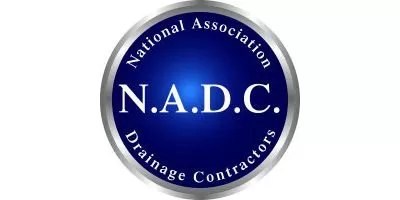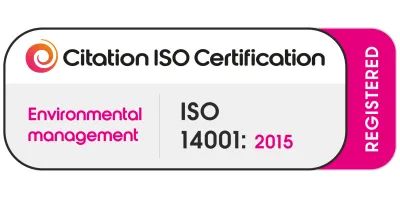Outside Drain Overflowing? What To Do
If your drain outside is overflowing, it can be more than just a nuisance – you should see it as a warning sign. Stagnant, pooling water in your garden, driveway or decking area can smell awful, it creates unsanitary conditions, it can attract pests, and it can even cause damage to your property.
In this guide from our team at Express Drainage Surveys, we’re sharing our expertise. We’ll help walk you through the steps on how to identify the problem, get it fixed safely and also avoid any future drainage overflows.
Recognising the warning signs
Not sure if your external drains are becoming blocked? Here are the warning signs to look out for that indicate you’ve got an issue (or one is building):
The water is visibly overflowing and pooling
If the water is already flooding around your external drain cover or manhole, it usually means that there is nowhere else for the water to go. This means there is a blockage either in the immediate pipe or perhaps somewhere further along in the system.
Gurgling noises
While most drains will emanate some sounds, air that is trapped behind any obstruction will create a bubbling and gurgling sound as the water flows through the system. This is an earlier indicator that a blockage is building.
Slow drainage
Even when there is heavy rain, your drains should be able to handle the load. If your drain is sluggish or can’t keep up in a reasonable downpour, this suggests there is a blockage developing somewhere in the system.
Increased insect activity
Bugs are generally drawn to moisture and stagnant water, particularly flies, so if there is an increase in activity around your drains, it may mean that there is organic debris rotting somewhere in the system. It’s important to tackle this issue to avoid putting anyone’s health at risk.
Common causes of outside drain blockages
What are the common causes of outside drain blockages? Here are some of the frequent culprits, but remember, it’s often easier to determine this by having a CCTV drain survey carried out:
- Leaves, soil and debris: This is especially common for garden drains where natural materials are blown and washed into them.
- Fat, oil and grease: If you frequently dispose of cooking fats through your kitchen drain, don’t be surprised if it later cools and solidifies in your drain to create a blockage.
- Tree roots: When the roots of a tree seek moisture, they can exploit gaps and cracks in your drain. With enough growth, this can turn into a serious obstruction to the flow of water.
- Poor drain design: If drains aren’t designed and laid properly in the first place, they’re prone to damage and displacement, leading to internal issues. This is truer of new build properties than for older properties.
DIY solutions to unblock outside drains
Tackling a blockage in your drain yourself is not recommended by our team as it can put your safety at risk. It can also do more harm than good if you’re not sure what you’re doing. However, we know that many people will be looking for solutions before contacting a professional, so here are a few things to try if you have safety gloves, eye protection and a dust mask.
- Use a heavy-duty plunger: This creates suction and dislodges any surface-level blockage.
- Rodding or drain snakes: You can insert these to try and break through stubborn blockages, but it may not be the right solution if you don’t know what the blockage is caused by.
- Boiling water: The heat from this can melt some grease build-up, so it may seem like it’s working, but it’s unlikely to completely do the job.
- Commercial drain cleaners: If your blockage is so bad that your drains are overflowing, you’re probably past the point at which a store-bought drain cleaner is going to be of much use.
When is it time to call the professionals?
How do you know if it’s time to get the help of professionals? With our expert tools and knowledge, we’re always happy to help if you reach the following conclusions:
- It’s a persistent or deep blockage: If your DIY attempts fail, you probably require specialist equipment and know-how.
- It’s tree root intrusion: This isn’t something you can really solve on your own, you may need professional services to cut through the roots and relining of pipes may be needed.
- Pipes have collapsed If the overflow has created so much pressure that portions of the pipe have fallen in, you may start to see sinkholes – this needs a survey and serious repair.
- It’s an emergency: Often, if drains are overflowing, it can cause property flooding, so it requires immediate attention.
The techniques our experts use
As experienced drainage technicians, we can apply a variety of professional techniques to get to the bottom of why your drain is overflowing. Here are just some of the services we offer and how they can help:
- CCTV Drain Survey: In order to provide the right solution, it’s vital we find out the real cause. Using state-of-the-art camera technology, we can map your drains and pinpoint the exact location of the blockage. This may reveal more than one issue if there is a domino effect.
- Drain Unblocking: Using specialist equipment, such as drain jetting and rodding, we can shift blockages and break down obstructions.
- Drain Cleaning: Should your blockage be removed, regular drain cleaning can help you to prevent a recurrence of the same issue.
- Concrete in Drains: Where concrete has inadvertently made its way into your drain, we can deploy our cutting equipment to break it down and restore your flow.
- Blocked Drains: Whether you know the true cause of a blockage, we’re always here to help you put things right, because we understand how distressing it can be to see your drains overflowing.
How to prevent future overflow
Prevention is always the best cure, so here are five things you can do to prevent overflows in the future:
- Don’t pour your fats and oils down the drain. Use specialist oil collection and drop-off points and let grease solidify before putting it in the bin.
- Fit covers over outside drains. Where downpipes or wastewater pipes are exposed, ensure they have covers to stop leaves and twigs from easily entering the system.
- Avoid planting trees near drain lines. This helps to keep their roots as far away as possible.
- Perform regular cleaning. Some of those DIY tips mentioned earlier work much better if performed as part of your regular property maintenance.
- Schedule a professional inspection. Book an annual inspection for your drains to catch any early signs of drain damage or the accumulation of a blockage.
If your outside drain is overflowing, don’t waste another second – call us now to arrange for an appointment and we’ll provide a rapid service to help you restore your property.





